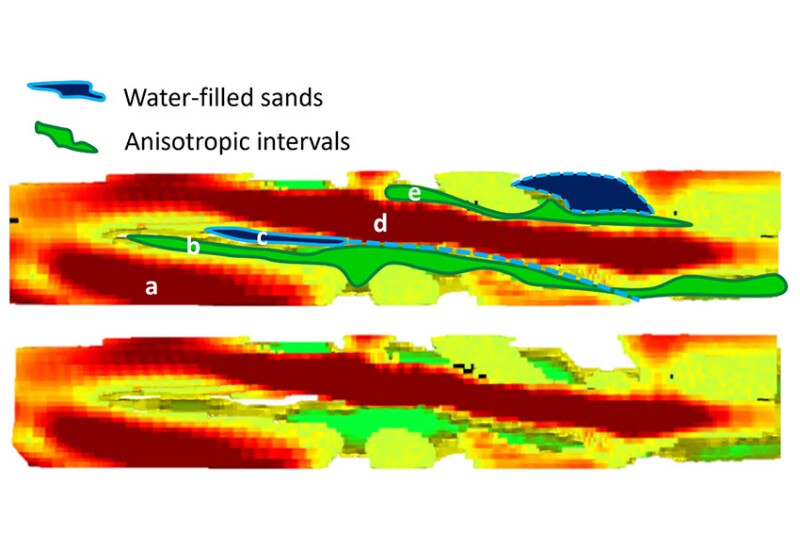在钻井作业过程中,采用比地震具有更高分辨率的随钻测井 (LWD) 工具来帮助决策和优化井位。单独关注数据源可以带来成功的油井,但将这些数据置于地质环境中可以做出更复杂的决策,并加深对油藏的了解。将近井眼测量与地震解释得出的地质模型联系起来的关键是超深电磁工具。作者描述了一种将所有可用技术结合起来的方法,以提高储层对不同沉积环境的了解。
地质背景
深海浊积岩矿床被认为是重要的油气藏类型;全世界最近的许多重大碳氢化合物发现和油田开发都发生在浊流沉积的沉积物中。

在钻井作业过程中,采用比地震具有更高分辨率的随钻测井 (LWD) 工具来帮助决策和优化井位。单独关注数据源可以带来成功的油井,但将这些数据置于地质环境中可以做出更复杂的决策,并加深对油藏的了解。将近井眼测量与地震解释得出的地质模型联系起来的关键是超深电磁工具。作者描述了一种将所有可用技术结合起来的方法,以提高储层对不同沉积环境的了解。
深海浊积岩矿床被认为是重要的油气藏类型;全世界最近的许多重大碳氢化合物发现和油田开发都发生在浊流沉积的沉积物中。

During drilling operations, logging-while-drilling (LWD) tools, which have greater resolution than seismic, are deployed to aid in decision-making and optimize well placement. Focusing on the data sources in isolation can lead to successful wells, but placing this data in a geological context allows for more-sophisticated decision-making and leads to greater reservoir understanding. Key to linking the near-wellbore measurements with the geological models derived from seismic interpretation are ultradeep electromagnetic tools. The authors describe an approach in which all available technologies are combined to improve reservoir understanding of different depositional environments.
Deep marine turbidite deposits are recognized as an important hydrocarbon reservoir type; many recent major hydrocarbon discoveries and field developments worldwide occur in sediments deposited by turbidite currents.
